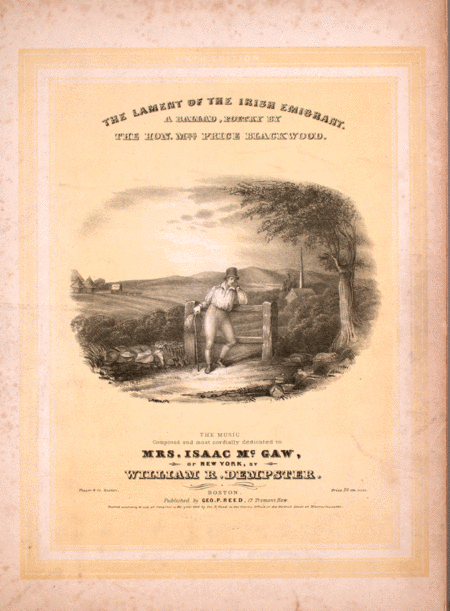Piano and voice - Digital Download SKU: LV.2953 Composed by William R. Dempster. Gates, Hills, Farms, Spires, Carts & wagons, Sadness, Families, Death, Love, Spouses, Farewells. Lester S. Levy Collection. 8 pages. Published by Johns Hopkins University Sheridan Libraries (LV.2953). The Lament of the Irish Emigrant. A Ballad. Sixth Edition. Poetry by The Hon. Mrs. Price Blackwood. The Music Composed by William R. Dempster. Published 1843 by Geo. P. Reed, 17 Tremont Row in Boston. Composition of strophic with piano and voice instrumentation. Subject headings for this piece include Gates, Hills, Farms, Spires, Carts & wagons, Sadness, Families, Death, Love, Spouses, Farewells. First line reads I'm sitting on the stile Mary, where we sat side by side.. About The Lester S. Levy CollectionThe Lester S. Levy Collection of Sheet Music consists of over 29,000 pieces of American popular music. Donated to Johns Hopkins University Sheridan Libraries, the collection's strength is its thorough documentation of nineteenth-century American through popular music. This sheet music has been provided by Project Gado, a San Francisco Bay Area startup whose mission is to digitize and share the world's visual history.WARNING: These titles are provided as historical documents. Language and concepts within reflect the opinions and values of the time and may be offensive to some.
